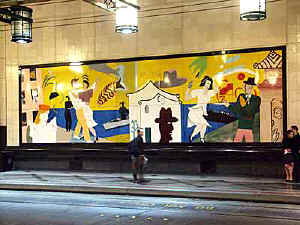
Travelogue: Day Two
After a full day of seminars, bus tours, and walking tours, we are beginning to get a better understanding of the extensive nature of the public art program in Seattle.
The Seattle Arts Commission's Public Art Program, established by municipal ordinance in 1973, specifies that one percent of City capital improvements be set aside for the commission, purchase and installation of artworks. To date Seattle has a collection of over 2,200 contemporary artworks that have been commissioned through four major commissioning methods.
One of these components is permanent major indoor and outdoor artworks. There are approximately 320 large-scale permanent installations in outdoor locations such as parks and community centers.
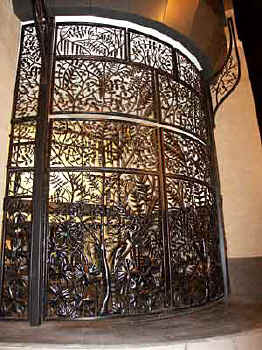
In Rain Forest Gates by Jean Whitesavage and Nick Lyle, hundreds of hand-forged ironwork are woven together to express the beauty and harmony of the web of life. These two-story gates create an impressive entrance to the King County Department of Transportation and Natural Resources. (This was a project of King County Art Commission)
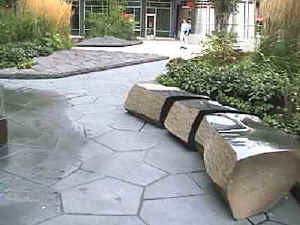

A second major component is the Artworks for the Portable Works Collection. Relatively small-scale art work in various media are exhibited in public areas on a rotating basis.
A tour of this program was highlighted by a special presentation by Seattle Mayor Paul Schell whose own office is filled with art. Mayor Schell helped draft the original ordinance for Seattle's Percent for the Arts.
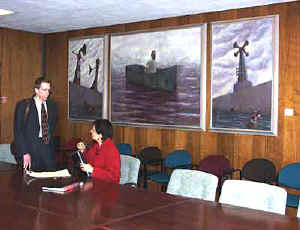

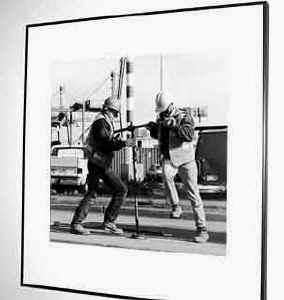
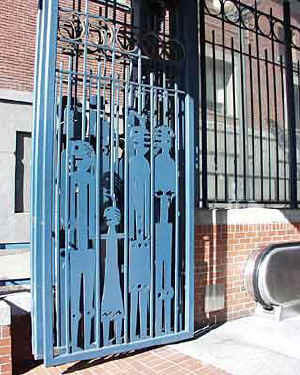
A fourth commissioning method is design team projects to bring artist, architects, and design professionals together to work on the overall design of a site or major planning project.
We saw many examples of this process on our walking-riding tour of the Metro (underground bus). In the development of seven multi-level Metro stations, artists were brought into the process in the planning, design and construction of these public projects from the beginning.
This resulted in projects in which artistic themes were incorporated from the opening gates through all levels of the stations.

